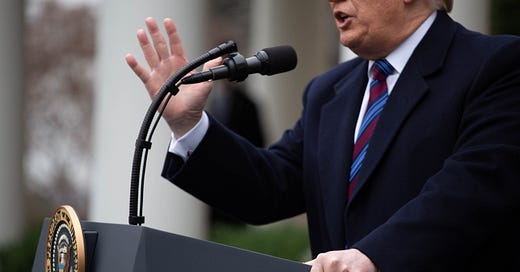Why Twitter Really Banned Trump

President Donald Trump speaks to the media in the Rose Garden of the White House. (Michael Candelori/ via Getty Images)
The inside story of how the digital town square decided to kick off a sitting president.
152
This story is by Bari Weiss, Isaac Grafstein, Suzy Weiss, Michael Shellenberger, Peter Savodnik and Olivia Reingold.
On the afternoon of January 8, 2021, Twitter decided to permanently suspend the account of Donald Trump. It was the first and only time a sitting head of state was kicked off the platform.
Enjoying the story?
Enter your email to read this article and receive our daily newsletter.
Already have an account?
Sign In




